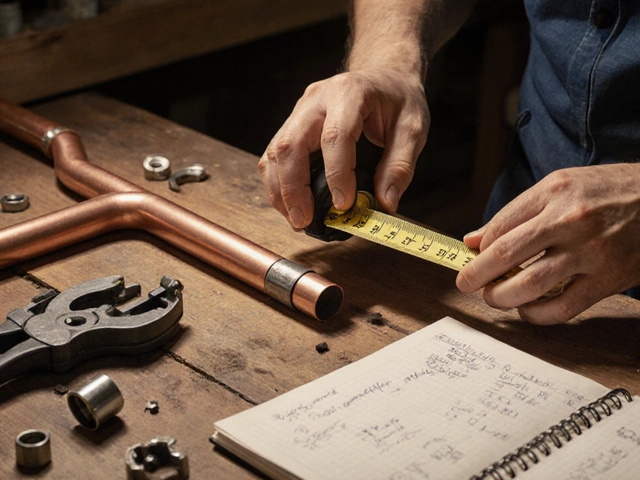Plumbing Math: What You Really Need to Know for Trade Success
When you're working with pipes, drains, and water pressure, you're not just fixing leaks—you're doing plumbing math, the practical arithmetic and geometry that ensures water flows where it should and nothing leaks where it shouldn't. Also known as trade math, it's the quiet backbone of every successful plumbing job. You don’t need calculus. You don’t need a degree in engineering. You need to know how to add fractions, measure angles, and calculate pipe lengths so everything fits and works.
Plumbing calculations, like figuring out fall rates for drainage or pipe sizing based on fixture units, are the daily tasks that separate a helper from a pro. These aren’t classroom exercises—they’re real-time decisions made on a job site with a tape measure, a level, and a calculator app on your phone. If you’re installing a new bathroom, you need to know how much slope a 4-inch drain pipe needs per foot. If you’re rerouting water lines, you need to calculate pressure drops across multiple fittings. Math for plumbers, isn’t abstract—it’s about getting the job done right the first time.
And it’s not just about numbers. Trade math, the kind used in skilled trades like plumbing, carpentry, and electrical work, is hands-on, visual, and tied directly to tools and materials. You learn it by doing. You remember it because you’ve seen a pipe burst when the slope was off by half an inch. You’ll find that the same math shows up in other trades too—like carpentry, where you need to cut angles for rafters or measure for cabinetry. The difference? In plumbing, a wrong number means water damage. In carpentry, it’s a crooked shelf. Either way, you learn fast.
What you’ll find in the posts below are real guides that break down exactly what math you need—no fluff, no theory, just what works on the job. From how to use fractions to cut pipe fittings to how to calculate water pressure for multi-story buildings, these articles give you the tools to stop guessing and start measuring right. Whether you’re just starting out or you’ve been on the job for years and still second-guess your calculations, this collection has something that clicks.




